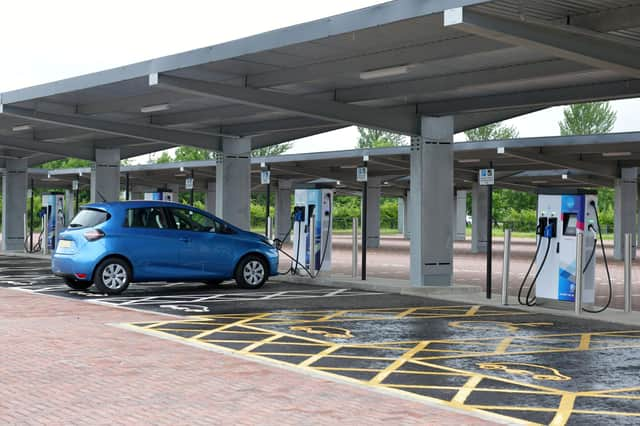Renewables have a big role to play as we aim for net zero carbon emissions - David Bone


The UK, Europe and New Zealand had already set targets to achieve net zero by 2050, with Scotland setting a challenging 2045 target. But the world is taking notice. China surprised most commentators by setting a 2060 target and Japan and South Korea have both set 2050 targets.
All of which leads to COP26 in Glasgow, the UN Climate Change summit now scheduled for November 2021. COP26 will proceed in an entirely new political context and is shaping up to be one of the most critical meetings in the effort to limit global warming. All eyes will be on Glasgow, giving both the UK and Scotland an opportunity to demonstrate the steps they have been taking to ensure a green future.
Advertisement
Hide AdAdvertisement
Hide AdRenewable Energy is currently providing about 90 per cent of our electricity and the government has set out its stall on decarbonisation. In the past month, the Scottish Government has published its Sectoral Marine Plan and its Offshore Wind Policy Statement recognising the potential for 11GWs of deployment by 2030 (up from 8GWs previously targeted) and a commitment "to set the course for this delivery". This follows on from the Crown Estate announcement in April of its first seabed leasing round in a decade, opening up new opportunities in the North Sea. There is also considerable optimism about the role of floating offshore wind.


However, the 2020 target of producing 11 per cent of non-electrical heat demand from renewable sources is a long way off. Heat makes up 55 per cent of the energy used in Scotland so decarbonising it is vital if we are to meet our net zero targets.
Progress also depends on changes in heat demand so the recent announcement of a new £4.5million cash-back incentive to help people install renewable and energy efficient measures in their home is welcome. An update is expected shortly to the Government's 2017 Energy Strategy and it is likely to target a green recovery to the public health and economic crisis, but one based on a just transition to ensure the sectors of the public who have suffered most from Covid-19 are not left behind by the measures required to achieve the recovery.
Among all this, the two main barriers to rapid progress – planning and grid – remain. Grid mainly lies within the UK government and Ofgem's remit, however, planning reform is firmly within the Scottish government's control. The new National Planning Framework (NPF) 4 is intended to set out the planning framework for Scotland to 2050. Powering Scotland through renewable energy is in our long-term national interest and our planning system needs to provide explicit support for further deployment, and for the repowering of sites nearing the end of their operational consent. It would be a statement of intent if the NPF4 created a presumption in favour of development, provided it supports renewable energy targets.
It will also be important that the planning framework caters for the most efficient, technologically advanced turbines to ensure attractiveness of Scottish sites. The latest turbines are taller and have increasingly greater rotor diameter, but a considerable share of the onshore wind pipeline in Scotland are for an upper tip height of 125m or less. While the tallest wind turbines will not be appropriate in every setting, some may say the current system can be criticised for placing too strong an emphasis on landscape considerations.
With NPF4 postponed to 2022, in the meantime the Scottish Government could ensure that local authorities are sufficiently resourced, ideally with ring-fenced funds, to handle new planning applications for renewables projects.
When NPF4 is brought forward, it will miss the boat unless helping to achieve net zero is a material consideration when assessing proposed developments. If decarbonisation targets are to be met, there is no time to waste.
David Bone is Head of Energy & Natural Resources, Harper Macleod